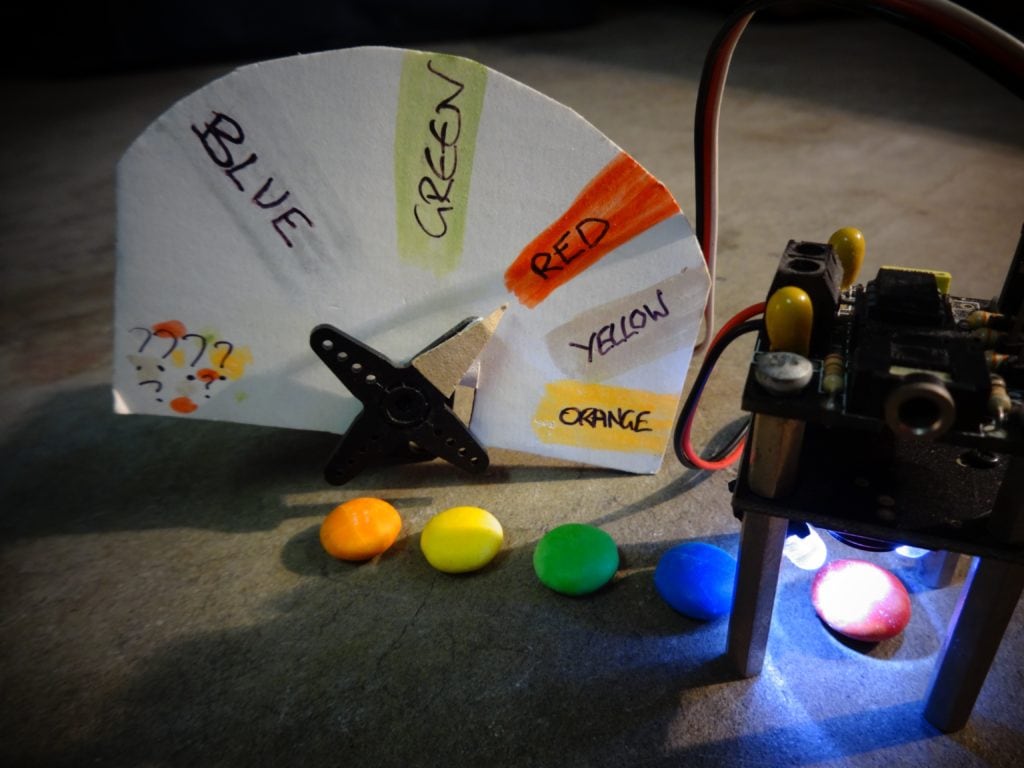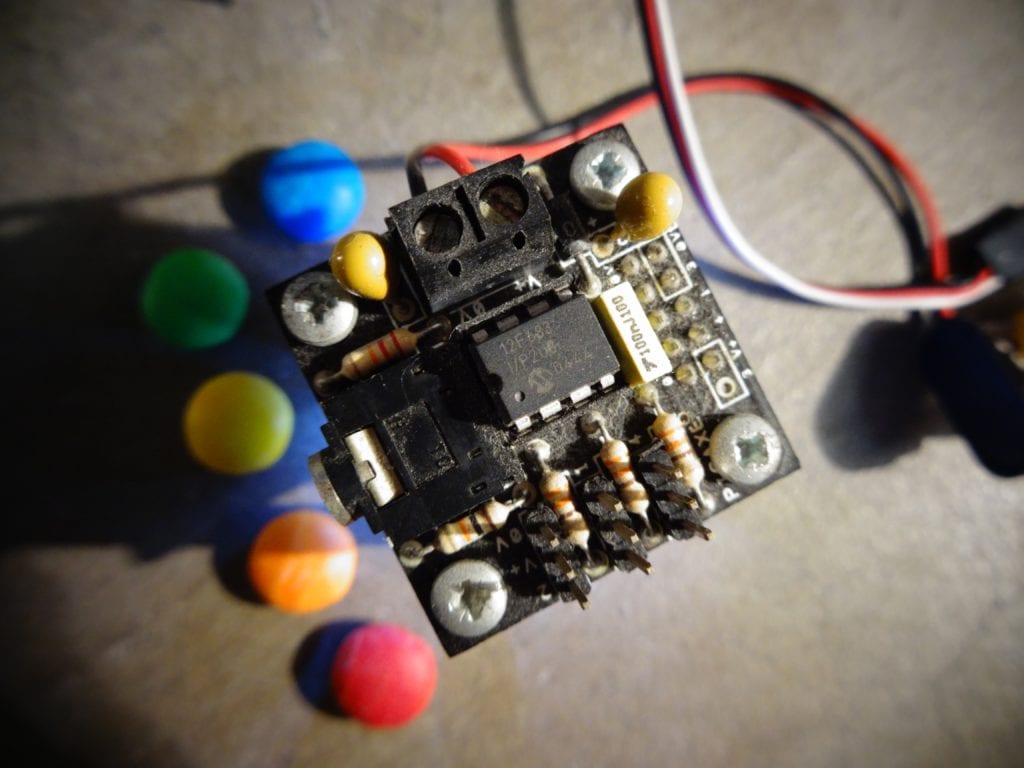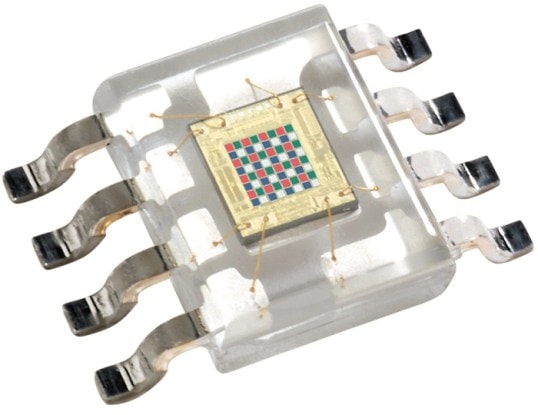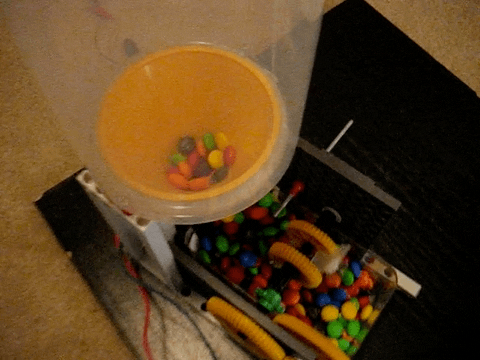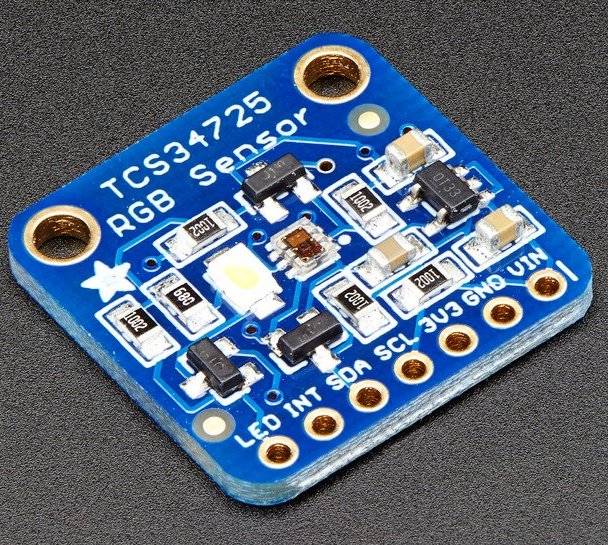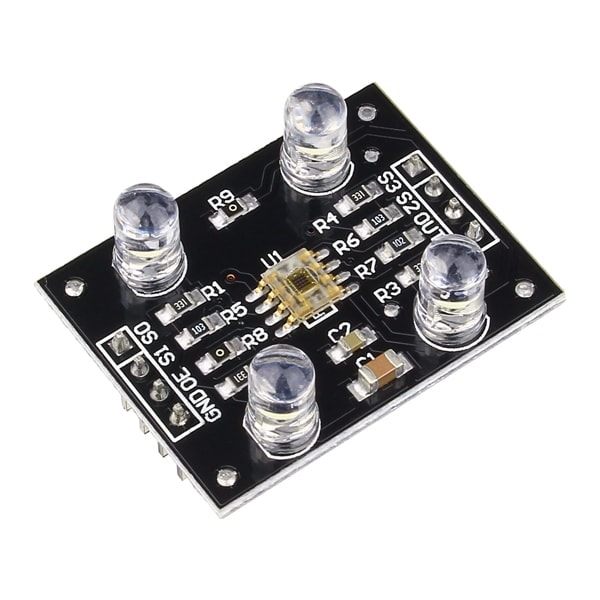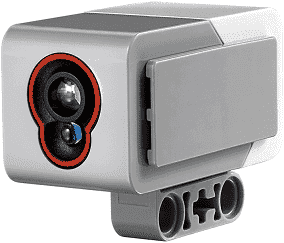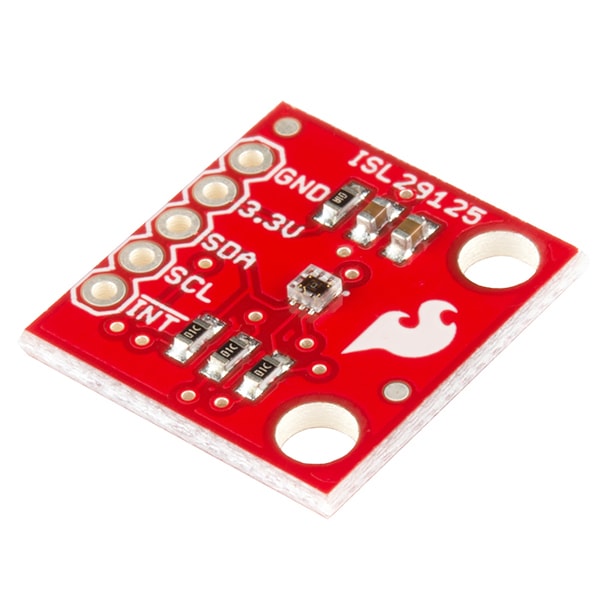AXE045 Color Sensor
The AXE045 Colour Sensor module is built around a TAOS TCS230 colour sensor. The TAOS TCS230 sensor chip is a ‘programmable colour light-to-frequency
converter’, supplied as a small 8 pin SOIC format chip.
In simple terms this means that it is a sensor that can measure the reflected light intensity from an illuminated sample, by use of an 8 by 8 array of photodiodes. Of these 64 photodiodes, 16 are covered by blue filters, 16 have red filters, 16 have green filters and 16 have no filter.
The red, green and blue (RGB) filters embedded in the TAOS sensor ensure only these colors are exposed to the underlying photodiodes. Therefore, by using a PICAXE microcontroller, the user can programmatically select which colored filtered photodiodes to use at a particular time, and, by cycling through the 4 different options, come to a very good approximation of the RGB content of the sample – hence identifying its color!
